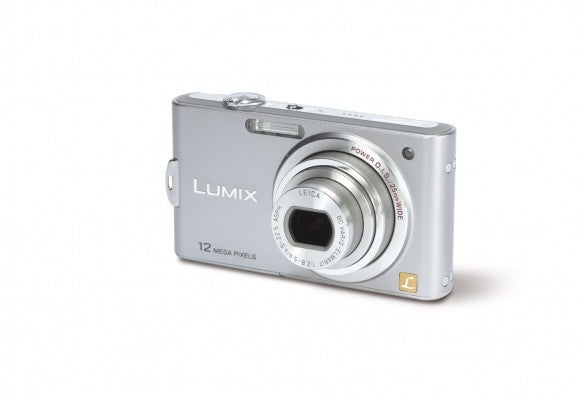Is the Panasonic Lumix FX60 the company's most advanced compact yet?
Panasonic Lumix FX60 Review
The Lumix DMC-FX60 is virtually identical to its immediate predecessor the FX40. It shares the same aluminium body, 12.1MP sensor, 25-125mm lens and 2.7-inch monitor, and they also have many of the same features. They both have 1280 x 720 HD video recording and a range of other advanced automatic features grouped under the Intelligent Auto setting. They even share Panasonic’s high performance Venus Engine V processor.
The FX60 only offers two real improvements over the older model; the improved Power OIS image stabilisation system, and an improved autofocus system which Panasonic claims is twice as fast as the FX40. While these are worthwhile additions to an already excellent camera, it’s probably not enough to justify upgrading from an FX37 or FX40.
There are a number of high-spec wideangle compacts available at the moment at around £180 or £190, including the Canon IXUS 110 IS, the Nikon CoolPix S620, the Sony Cyber-shot W290 and the new Samsung IT100. By comparison the FX60’s £244 price looks a bit high, especially considering that the FX40 is still around the same price. The FX60’s body design is over six years old, and is starting to look a bit dated compared to its rivals.
The new Power OIS system is excellent; able to take shake-free shots at shutter speeds as slow as 1/5th of a second. The improved autofocus system is less immediately impressive. Panasonic’s AF has always been good, although it’s never really been in the same league as Canon or Casio. The FX60’s improved AF is much faster than previous models, and has greatly improved low light performance, but even with this improvement it is still beaten by the £150 Casio EX-S12, or any recent Canon IXUS model.
The FX60 starts up in just under three seconds, which is about average for a camera of this type, and has a single shot cycle time of around 1.9 seconds, which is fairly quick. Surprisingly the FX60 doesn’t have a proper continuous shooting mode, just a limited burst mode which takes three pictures in fine or five shots in basic quality mode.
Image quality is usually a Panasonic strong point. The excellent Leica-branded lens produces superb edge-to-edge sharpness with no sign of chromatic aberration and only a trace of barrel distortion despite its ultra-wide 25mm setting.
The sharp lens lets the sensor record a lot of fine detail, and the extremely low file compression in fine quality mode really makes the most of it. File sizes average around 6MB, much larger than most other 12MP compact cameras.
Exposure metering is accurate in most conditions, and copes well with backlighting. Dynamic range is not particularly brilliant, but colour rendition is very good, with detail even in bright highlights.
Image noise is an issue, although the FX60 does better than some 12MP rivals. Noise is plainly visible at ISO 400, with loss of detail and stripy gradients especially in the red channel. ISO 800 is worse, but even at ISO 1600 the overall colour balance remains consistent and the pictures could be used for small prints or web sharing.
Verdict
The FX60 is a high-quality camera with many advanced automatic features. Build, performance and image quality are all above average, but it is very expensive and the six-year-old body design is a bit dated.






